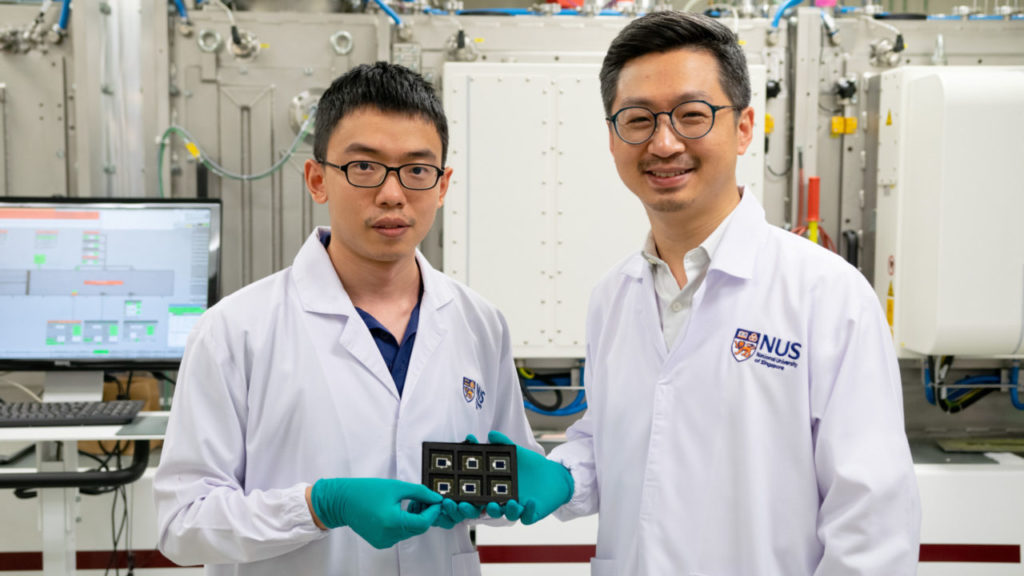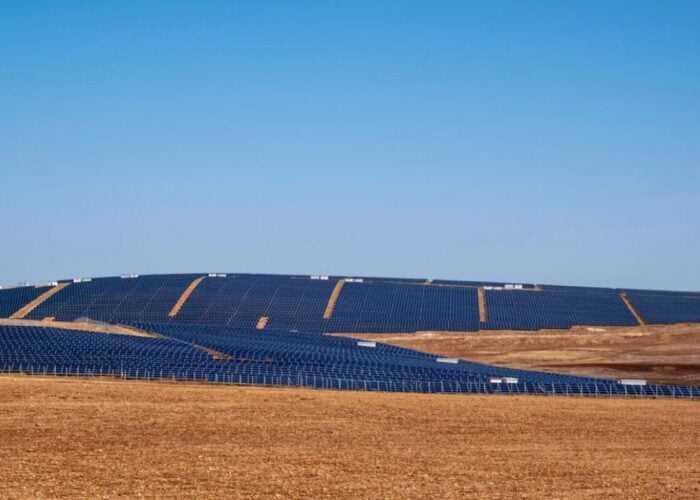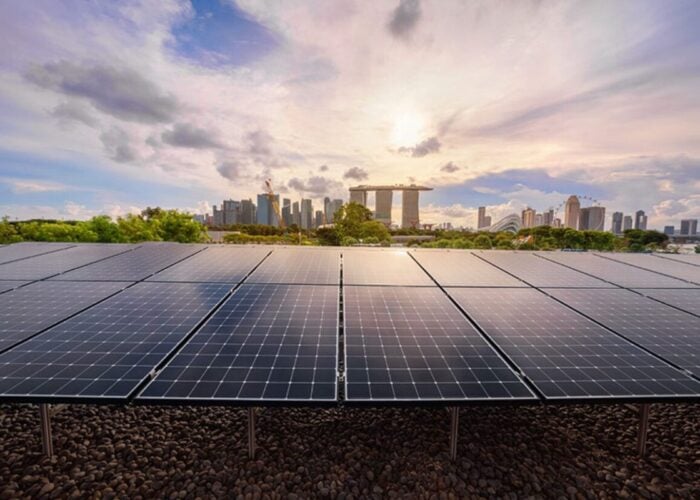
Researchers from the National University of Singapore (NUS) have developed a new triple-junction perovskite/silicon tandem solar cell that has posted a power conversion efficiency of 27.1%, across an area of 1cm2, which is a record for this type of cell.
Tandem solar cells have received considerable attention from researchers in recent years, as the usage of multiple junctions in the same cell can dramatically increase the range of sunlight the cell can convert to electricity. According to the US Department of Energy, the maximum conversion efficiency of a single-junction cell is around 33.5%, compared to a maximum efficiency of “over 45%” for multiple-junction cells.
Unlock unlimited access for 12 whole months of distinctive global analysis
Photovoltaics International is now included.
- Regular insight and analysis of the industry’s biggest developments
- In-depth interviews with the industry’s leading figures
- Unlimited digital access to the PV Tech Power journal catalogue
- Unlimited digital access to the Photovoltaics International journal catalogue
- Access to more than 1,000 technical papers
- Discounts on Solar Media’s portfolio of events, in-person and virtual
Or continue reading this article for free
Last year, Chinese manufacturer LONGi developed a crystalline silicon-perovskite tandem cell with a power conversion efficiency of 33.9%, a record for the type of cell, and while the NUS’ cell does not exceed this value, it builds on some of the work completed by LONGi.
The NUS cell consists of three cells, two of which are a perovskite solar cell and a silicon solar cell, which the researchers stacked to create a dual-junction cell. The team then added a third cell, a perovskite cell that includes cyanate, a negatively-charged ion that the researchers said “helped to stabilise its structure and form key interactions within the perovskite”.
Much of the researchers’ work focused on analysis of the impact of using cyanate, and found that perovskite solar cells that use the ion can generate 1.422 volts, compared to 1.357 volts for conventional perovskite cells, “with a significant reduction in energy loss”, according to the scientists.
“Ground-breaking insights”
“Remarkably, after 15 years of ongoing research in the field of perovskite-based solar cells, this work constitutes the first experimental evidence for the inclusion of cyanate into perovskites to boost the stability of its structure and improve power conversion efficiency,” said assistant professor Hou Yi, who led the team from the NUS College of Design and Engineering and the Solar Energy Research Institute of Singapore in developing the triple-junction cell.
“Collectively, these advancements offer ground-breaking insights into mitigating energy loss in perovskite solar cells and set a new course for the further development of perovskite-based triple junction solar technology,” added Hou.
The news is an encouraging development for triple-junction solar cells in general. Last year, researchers from the Fraunhofer Institute for Solar Energy Systems (Fraunhofer ISE) developed a triple-junction cell that used two layers of perovskite, and one layer of silicon, which recorded a conversion efficiency of over 30.0%, suggesting that the addition of cyanate to the NUS cell could have had a significant impact.
Earlier this year, researchers from Fraunhofer ISE and Oxford PV developed a full-sized tandem PV module with a power conversion efficiency of 25%, a record for a module of that size, as the solar sector continues to invest in research opportunities.







